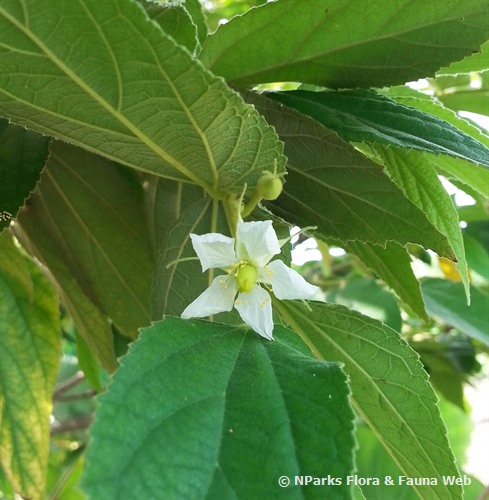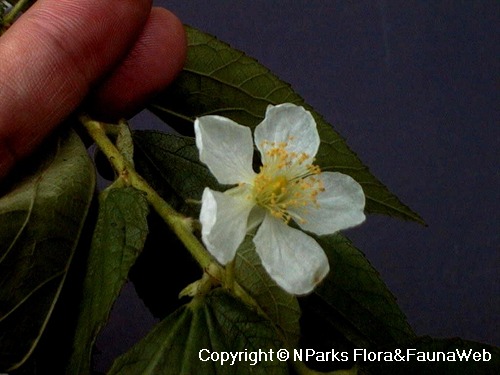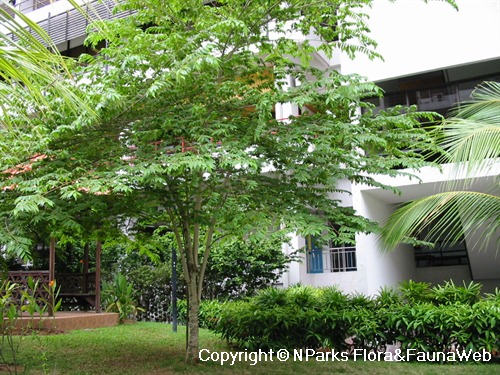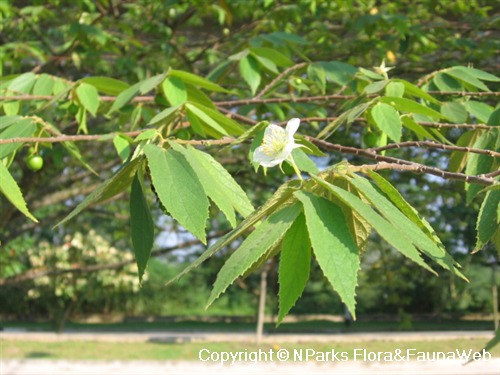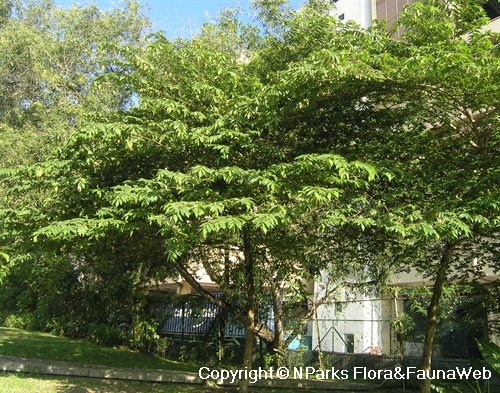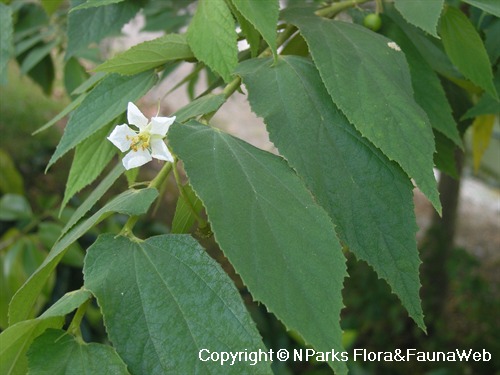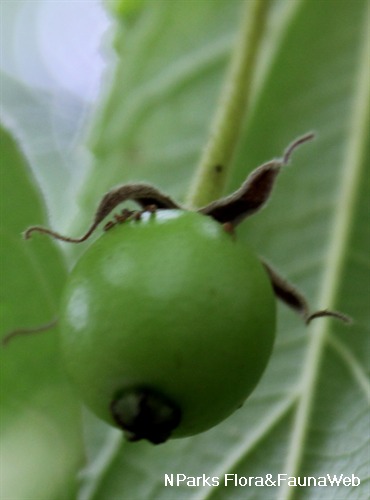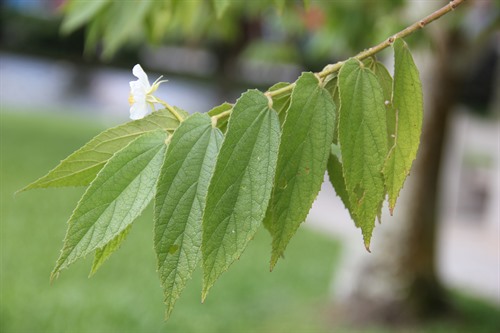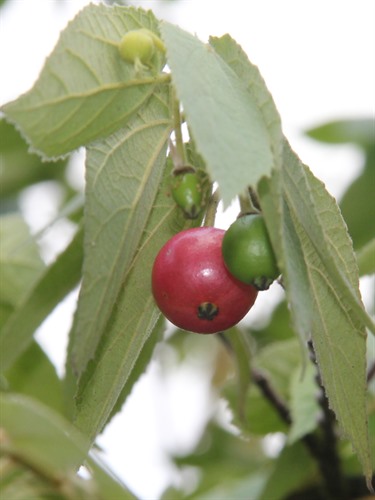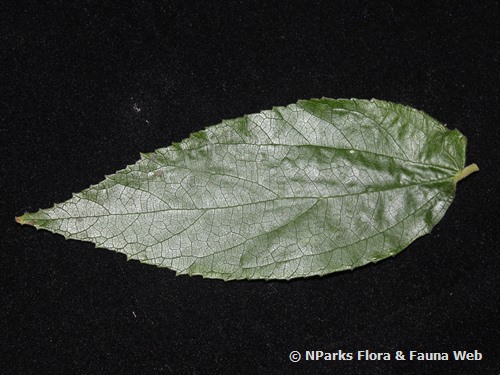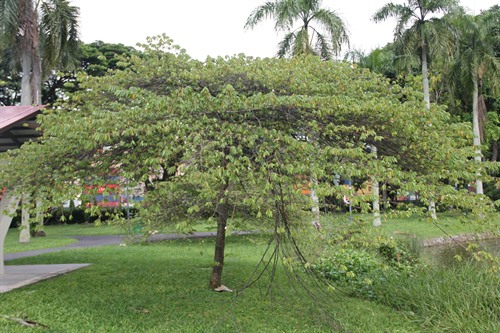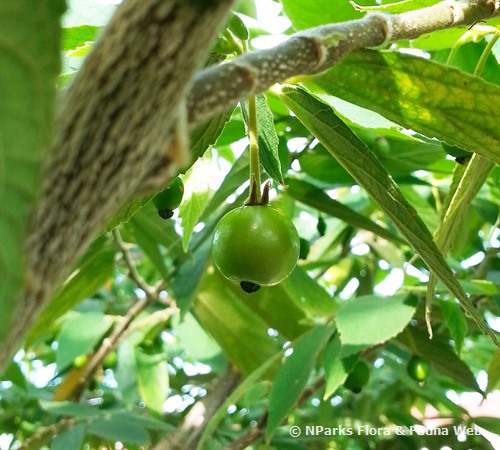
Back
Muntingia calabura
| Family Name: | Muntingiaceae |
| Common Name: | Buah Cheri, Malayan Cherry, Singapore Cherry, Calabura, Cherry Tree, Japanese Cherry, Jamaican Cherry, West Indian Cherry Tree, Kerukup-Siam, Buah Ceri, Capulin, Panama Berry, 西印度櫻桃 |
Name
Classifications and Characteristics
| Plant Division | Angiosperms (Flowering Seed Plants) (Dicotyledon) |
|---|---|
| Plant Growth Form | Tree (Small (6m-15m)) |
| Maximum Height | 3 m to 12 m |
Biogeography
| Native Distribution | Tropical America |
|---|---|
| Preferred Climate Zone | Tropical |
Description and Ethnobotany
| Others - Plant Morphology | A small tree of 3-12m in height, which has fan-like branches and is droopy, thus resulting in it’s tiered tree form. Leaves are evergreen of about 4-14cm long and 1-4cm wide. Leaves are simple, ovate-lanceolate, dark-green and minutely hairy on the upper side, asymmetry of leaf blade base, and leaf margin serrate. Flowers have white petals and are 1.25-2cm wide with 5 green sepals, 5 white petals and many prominent yellow stamens.Fruits are 1-1.25cm in diameter, with red or sometimes orangey-yellow smooth skin. Several thousands tiny seeds are found in the soft pulp, but are too fine to be noticed when eating. It is able to thrive in both acid and alkaline conditions, and is drought-resistant but not salt tolerant. |
|---|---|
| Ethnobotanical Uses | Edible Plant Parts : Edible Fruits Food (Fruit or Vegetable) Others: The sapwood is yellowish, compact, fine-grained, and can be easily used for general carpentry. It is also a potential source for fuel as it ignites quickly upon being burnt, with intense heat and gives off little smoke. Fruits are well-like by children. It tastes sweet and is similar to the taste of cotton candy. Bats are also attracted to the fruits. Fruits can also be made into jam and cooked in tarts. Flower infusions have antispasmodic values and are taken to relieve headaches or the very first symptoms of a cold. |
Landscaping Features
| Thematic Landscaping | Economic Garden, Naturalistic Garden |
|---|
Fauna, Pollination and Dispersal
| Fauna Pollination Dispersal Associated Fauna | Bee-Attracting |
|---|
Plant Care and Propagation
| Light Preference | Full Sun |
|---|---|
| Water Preference | Moderate Water |
| Plant Growth Rate | Moderate |
| Rootzone Tolerance | Acidic (low pH) Soils, Alkaline high pH Soils |
| Propagation Method | Seed |
Foliar
| Mature Foliage Colour(s) | Green |
|---|---|
| Mature Foliage Texture(s) | Hairy / Hirsute |
| Foliar Arrangement Along Stem | Alternate |
| Foliar Shape(s) | Non-Palm Foliage (Ovate, Lanceolate) |
| Foliar Base | Oblique / Asymmetrical |
| Leaf Area Index (LAI) for Green Plot Ratio | 3.0 (Tree - Intermediate Canopy) |
Floral (Angiosperm)
| Flower Colour(s) | White |
|---|
Fruit, Seed and Spore
| Mature Fruit Colour(s) | Red |
|---|
Image Repository
Others
| Master ID | 1743 |
|---|---|
| Species ID | 3036 |
| Flora Disclaimer | The information in this website has been compiled from reliable sources, such as reference works on medicinal plants. It is not a substitute for medical advice or treatment and NParks does not purport to provide any medical advice. Readers should always consult his/her physician before using or consuming a plant for medicinal purposes. |

